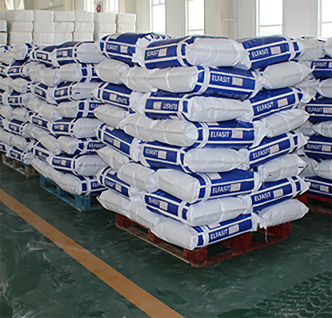
Dec . 21, 2024 06:28 Back to list
hpmc stands for
Understanding HPMC What It Stands For and Its Applications
In the vast lexicon of chemical compounds and materials, acronyms often serve as quick references to complex terms. One such acronym is HPMC, which stands for Hydroxypropyl Methylcellulose. This compound is a semi-synthetic polymer derived from cellulose, a natural polymer found in the cell walls of plants. The multifaceted properties and applications of HPMC make it significant in various industries, including pharmaceuticals, food, construction, and cosmetics.
Origin and Structure of HPMC
HPMC is derived from cellulose, which is obtained from plant fibers. The modification process involves the introduction of hydroxypropyl and methyl groups into the cellulose structure. This modification enhances the solubility of cellulose in water and imparts unique properties that are crucial for different applications. The degree of substitution and the molecular weight of HPMC can be altered during the manufacturing process, resulting in a range of HPMC grades suited for specific uses.
Properties of HPMC
HPMC is characterized by its thickening, binding, film-forming, and emulsifying properties. It is generally odorless and tasteless and forms a clear solution in water, making it a preferred choice in numerous formulations. Its stability under a wide pH range and resistance to microbial action further enhance its functionality. HPMC also exhibits excellent water retention properties, which are significant in applications like construction and personal care products.
Applications of HPMC
1. Pharmaceutical Industry HPMC is extensively used in the pharmaceutical sector as a binder, thickener, and stabilizer. It is a crucial component in tablet formulations, where it helps in controlling the release of active ingredients. HPMC is also utilized in the production of capsules and other dosage forms, where its properties facilitate the creation of more efficient and user-friendly medications.
hpmc stands for

2. Food Industry In the food sector, HPMC serves various functions, including emulsification, thickening, and serving as a fat replacer in low-calorie food products. It enhances texture, stability, and moisture retention, making it a popular ingredient in sauces, dressings, dairy products, and gluten-free baked goods.
3. Construction Industry The construction industry relies on HPMC for its water retention and thickening properties. It is commonly added to cement-based mortars and plasters to improve workability and adhesion. HPMC helps to maintain moisture levels, allowing for better curing of surfaces and enhancing the overall durability of construction materials.
4. Cosmetics and Personal Care HPMC's film-forming and thickening attributes are valuable in the cosmetics industry. It is used in lotions, creams, gels, and shampoos to enhance texture and stability. Its mildness and non-irritating nature also make HPMC suitable for sensitive skin formulations, contributing to its popularity in skin care products.
5. Agricultural Applications In agriculture, HPMC is utilized as a soil conditioning agent and as a dispersing agent in pesticide formulations. Its ability to enhance the availability of nutrients and improve soil structure benefits crop yield and health.
Safety and Environmental Considerations
HPMC is generally recognized as safe (GRAS) by regulatory bodies when used in food and pharmaceutical applications at specified concentrations. Its biodegradability also presents an advantage, as it poses minimal environmental impact compared to synthetic polymers. Nonetheless, as with any chemical compound, it is essential for users to adhere to safety guidelines and regulations pertaining to its use.
Conclusion
HPMC represents a fascinating intersection of nature and technology. As a derivative of cellulose, it showcases how the modification of natural materials can lead to the development of versatile compounds that serve multiple industries. From pharmaceuticals and food to construction and cosmetics, HPMC's wide-ranging applications highlight its importance in modern formulations and products. As industries continue to evolve and demand innovative solutions, the role of compounds like HPMC will undoubtedly become increasingly significant. Understanding what HPMC stands for is just the beginning of appreciating its multifaceted contributions to various fields.
-
Versatile Hpmc Uses in Different Industries
NewsJun.19,2025
-
Redispersible Powder's Role in Enhancing Durability of Construction Products
NewsJun.19,2025
-
Hydroxyethyl Cellulose Applications Driving Green Industrial Processes
NewsJun.19,2025
-
Exploring Different Redispersible Polymer Powder
NewsJun.19,2025
-
Choosing the Right Mortar Bonding Agent
NewsJun.19,2025
-
Applications and Significance of China Hpmc in Modern Industries
NewsJun.19,2025







